Merida Scultura Disc Team Edition (video) review
The Merida Scultura Disc Team Edition is a Pro level disc brake machine. We rode it on the cobbles and in the mountains to really put it to the test and see if disc brakes actually offer a benefit
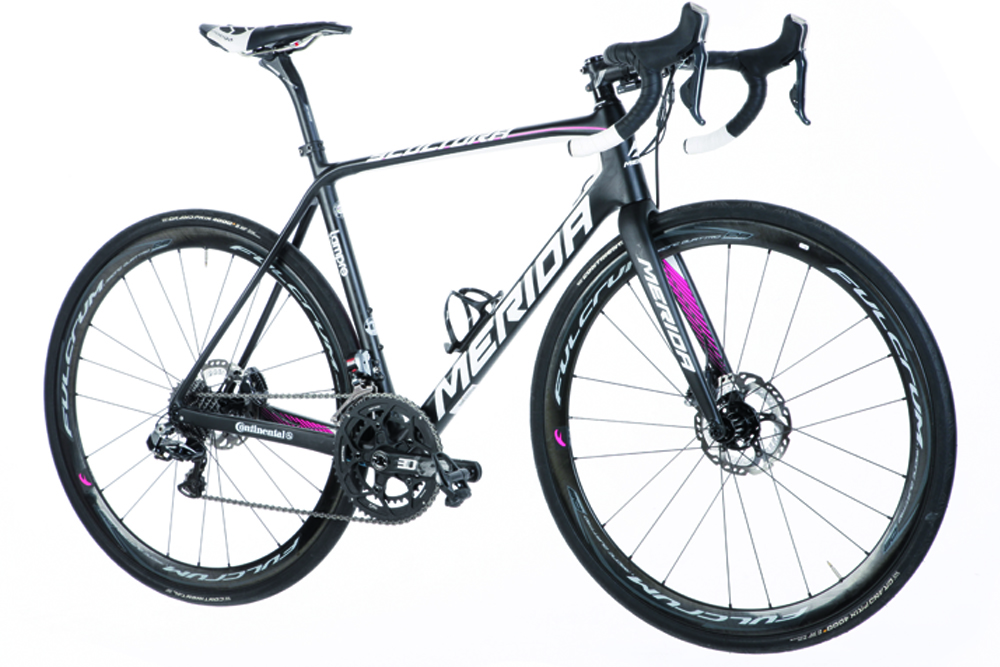
It has taken me a while to come round to the idea of disc brakes on road bikes, but this is the bike that has done it. With the impending arrival of Shimano’s new disc brake groupsets, we will see a further reduction in weight, but for now disc brakes still represent a significant weight penalty on the climbs and the Scultura is a prime example. However, descending on the Scultura Disc was the most fun I have had on a road bike. I ride bikes to put a smile on my face and the Scultura Disc certainly did that.
-
+
Looks
-
+
Compliant
-
+
Top spec
-
+
Excellent braking
-
+
Corners very well
-
+
Superb on descents
- +
-
-
Heavy for the price
-
-
RAT thru-axles
-
-
Not as nippy up hill as the non disc version
- -
You can trust Cycling Weekly.
The non-disc equipped version of the Merida Scultura was launched last year, ahead of the Giro d’Italia, and set out its stall as the ‘the 'lightest production bike' in the world.'
We were a big fan, and awarded the Scultura 6000 as our climbing bike of the year 2016. Disc brakes and their mountings undoubtedly add weight to a bike, so how has this affected the Scultura’s credentials as a bike for the mountains?
Frame
Video - My first impressions of the Merida Scultura Disc when I rode it on the cobbles
This is the same spec frame as the pros ride with the designation CF4. Although Merida calls it a size 54, it is more like 56 with respect to the top tube, stack and reach. The geometry is designed for racing.
At a glance the frame may look very similar to the non-disc equipped Scultura, but Merida has completely re-engineered the carbon layup to cope with the significantly different forces that disc brakes exert.
>>> Review of the Merida Scultura 6000 (video)
A stronger fork and beefed-up stays are required to cope with the additional asymmetric forces and torque steer generated by discs, something which Merida says results in a 150g increase over the non-disc frame.
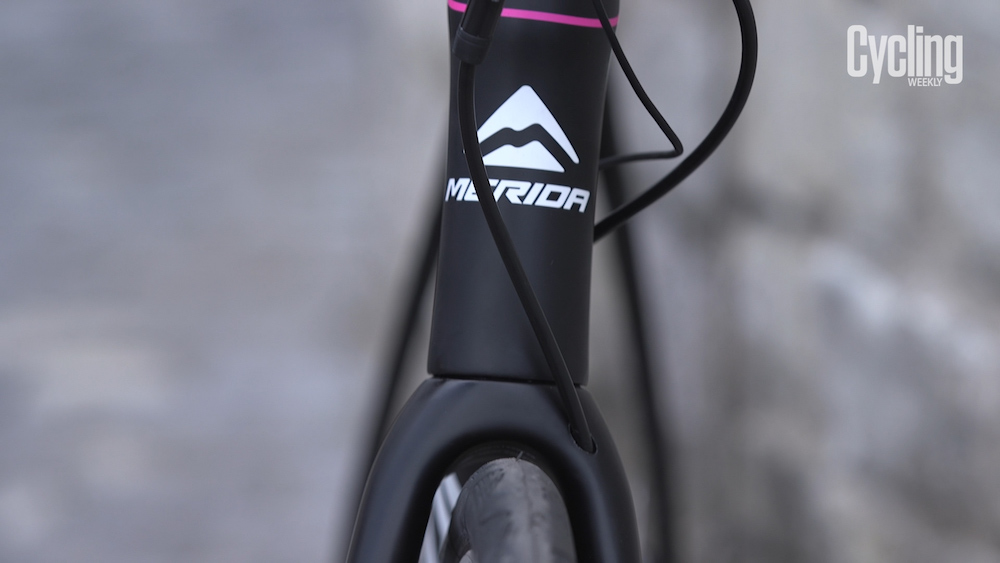
There are neat touches too. The internally routed hydraulic lines are guided, so as not to create annoying rattling sounds while riding.
>>> Cycling Weekly lightweight bike of the year - the Merida Scultura 6000 (video)
There is also an innovative heat sink on the rear brake that is said to cool it 50 per cent faster than a normal disc.
According to Merida, this is only needed on the rear, because it is not in a direct airflow like the front brake.
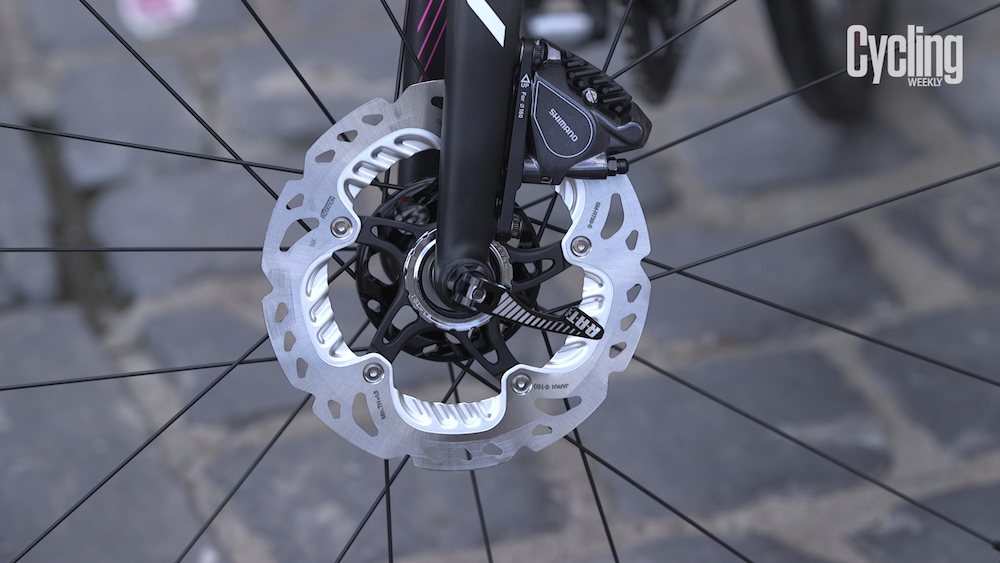
To accommodate the discs, Merida has had to lengthen the chainstays from 400mm to 408mm. Despite this, the wheelbase is still only 993mm to keep the handling agile and the steering responsive.
It has pro-style geometry and is the frame Lampre-Merida was racing before the UCI suspended its trial of disc brakes.
It is fitted with Shimano Dura-Ace Di2, Shimano hydraulic disc brakes, Fulcrum Quattro disc specific wheels, 28mm Continental GP4000S II tyres, FSA carbon bars and stem, and a Rotor 3D chainset.
>>> The lightest production bike in the world - The Merida Scultura 9000 Ltd (video)
Rather than declare that it had just launched the lightest, stiffest, most compliant, and most aerodynamic road bike ever, Merida has sought to differentiate itself, by suggesting that a disc brake version of the Scultura fulfils a different set of requirements to different riders.
The disc version still retains the Kamm tail tube profiles of the rim brake version.
Having tested both in the wind tunnel side by side, Jürgen Falke, Merida's head engineer claims that "there is no difference in aerodynamics."
Specification
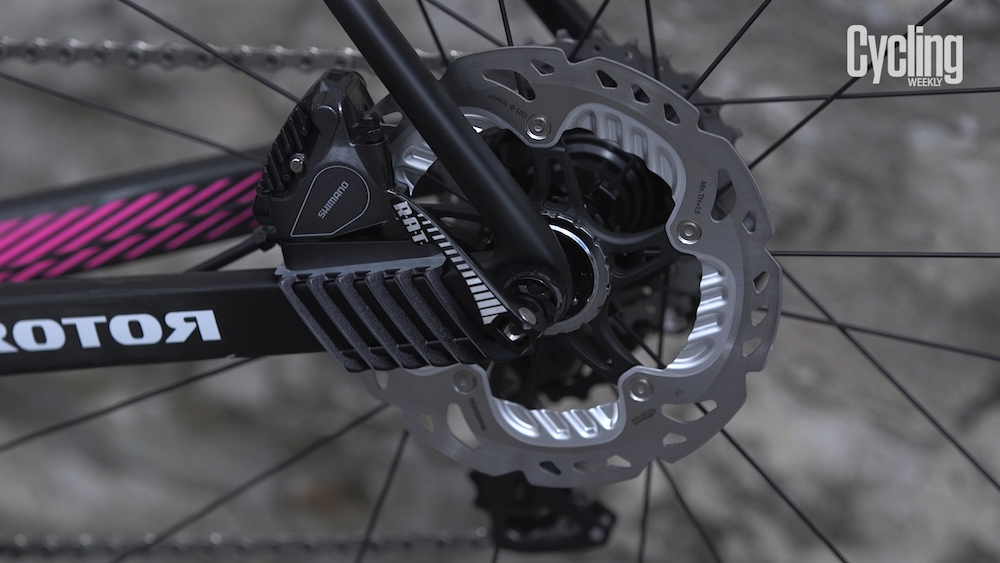
Being team spec, components are high end, with Dura-Ace Di2, flat mount hydraulic calipers, Shimano Ice tech rotors and a Rotor 3D chainset.
The wheels are disc-brake specific Fulcrum Racing Quattros, with no brake track on the rim.
Our test bike also came with broad 28mm Continental GP4000S II tyres, which boosted comfort, but also helped maximise disc brake stopping power with their slightly larger contact patch.
Merida has also made use of Focus’s 2nd generation Rapid Axle Technology, which is intended for rapid wheel insertion/removal over a conventional 12mm bolt thru-axel.
It is intended that the use R.A.T. thru axles will help with neutral service and also allow for speedy wheel changes during races.
>>> Review of the Merida Reacto Team E
The disc brakes use the flat mount standard front and rear, with 160mm rotors. Using 160mm rotors front and back, differs from many existing disc equipped road bikes currently on the market, with 140mm rotors, or 160mm front and 140mm rear.
We like this, as 160mm have greater heat dissipation.
Something to note is that adding disc brakes has added roughly 700g of system weight to the Merida Scultura over the non disc brake version.
But, future disc brake groupsets such as the new Dura Ace, should see a saving of around 200-300g on this figure.

Riding
I attended the launch of the Scultura Disc and rode it on the cobbles of Roubaix and Flanders. The pavé is a brutal challenge for any bike that is surely the ultimate compliance test.
Merida has engineered the carbon lay up to allow deflection and also incorporated flax fibres to reduce vibration.
The Merida Scultura Disc is compliant, especially in the rear end, although not to level of a Trek Domane.
When riding at speed on the flat, the Merida Scultura Disc is much faster than the old version. Despite not being a full on aero bike, it is more aero than an out and out climbing machine and holds speed beautifully.
While the Merida Scultura Disc performed well on the cobbles, I didn’t really need to brake much and felt that the increase in weight resulted in a bike that had lost some of the zip and rapid acceleration of the non-disc version.
This was most noticeable when ever the road headed uphill — it is heavier than the non-disc version after all.
Learn from the best
I decided that to really test the Merida Scultura Disc I would need mountains. I packed it into my bike box and took the Scultura Disc to the Pyrenees to put the brakes through their paces under more extreme conditions than we’d encountered on the launch.
The first time I encountered a long descent, it all made sense - the Scultura Disc drops down mountains like a Stuka dive bomber. I was quickly won over not only by the Scultura’s neutral handling, but by the reassurance offered by the disc brakes.
This bike is not just good on descents because it has hydraulic discs. Usually on frames without proper revisions to cope with the extra braking forces, torque steer can manifest itself as a disconcerting shuddering through the fork.
However, by redesigning and beefing up the fork, Merida has created a bike that feels solid and planted under braking, and 160mm rotors and the heat sink work well at dissipating heat.
The thru-axles are important for stiffness too and when you bank the Scultura Disc into corners it tracks the road precisely.
I was able to descend faster than I had ever done before with a level of confidence I had never experienced before. Modulation and feel through the brake levers is superb with a level of power that encourages late braking.
Crucially, being able to descend with more control not only made me faster, it gave me a greater thrill and was far more enjoyable. I am not a fan of the RAT thru-axles though.
I accept they may afford faster wheel changes in pro racing, but when subjected to continued use and grime, the pretension can become stiff and hard to adjust. I have had no issues with a 12mm bolt-thru axle.
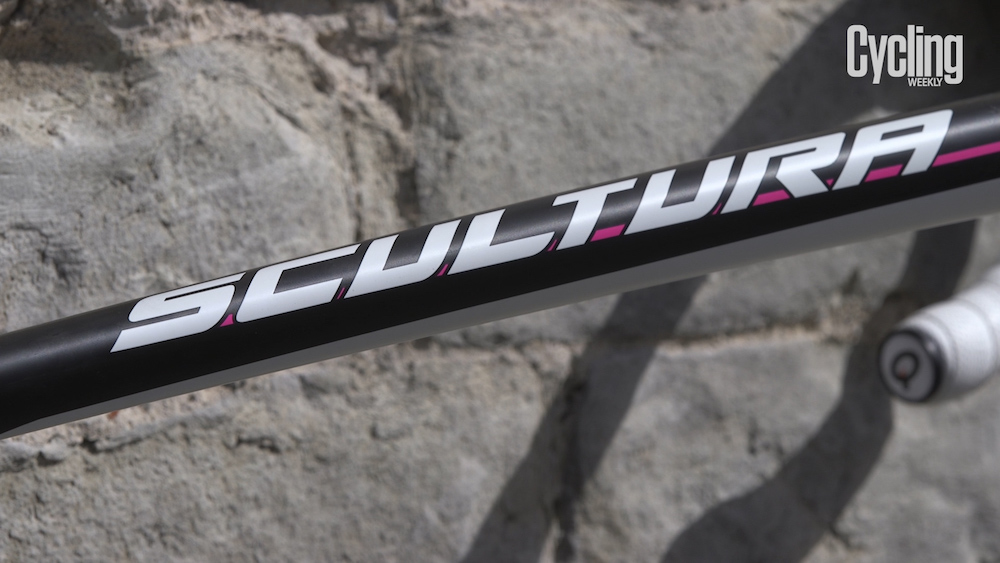
Value
Considering the performance and high quality of the product, the Merida Scultura Disc justifies its price tag and offers decent value.
It may be more expensive than a Canyon sold direct off the internet, but it is considerably lighter on your wallet than a Cervélo, Colnago or Pinarello. Overall, we consider Merida's pricing to be competitive.
As for the name? If you were wondering, Scultura comes from the Italian for sculpture.

Thank you for reading 20 articles this month* Join now for unlimited access
Enjoy your first month for just £1 / $1 / €1
*Read 5 free articles per month without a subscription

Join now for unlimited access
Try first month for just £1 / $1 / €1
Get The Leadout Newsletter
The latest race content, interviews, features, reviews and expert buying guides, direct to your inbox!
Oliver Bridgewood - no, Doctor Oliver Bridgewood - is a PhD Chemist who discovered a love of cycling. He enjoys racing time trials, hill climbs, road races and criteriums. During his time at Cycling Weekly, he worked predominantly within the tech team, also utilising his science background to produce insightful fitness articles, before moving to an entirely video-focused role heading up the Cycling Weekly YouTube channel, where his feature-length documentary 'Project 49' was his crowning glory.
-
 A bike rack with an app? Wahoo’s latest, and a hub silencer – Sea Otter Classic tech highlights, Part 2
A bike rack with an app? Wahoo’s latest, and a hub silencer – Sea Otter Classic tech highlights, Part 2A few standout pieces of gear from North America's biggest bike gathering
By Anne-Marije Rook Published
-
 Cycling's riders need more protection from mindless 'fans' at races to avoid another Mathieu van der Poel Paris-Roubaix bottle incident
Cycling's riders need more protection from mindless 'fans' at races to avoid another Mathieu van der Poel Paris-Roubaix bottle incidentCycling's authorities must do everything within their power to prevent spectators from assaulting riders
By Tom Thewlis Published
-
 Man hands himself in to Belgian police after throwing full water bottle at Mathieu van der Poel during Paris-Roubaix
Man hands himself in to Belgian police after throwing full water bottle at Mathieu van der Poel during Paris-Roubaix30-year-old was on Templeuve-en-Pévèle cobbled sector when television pictures showed the bottle hitting him in the face
By Tom Thewlis Published